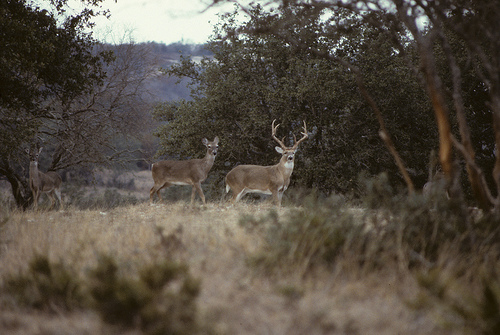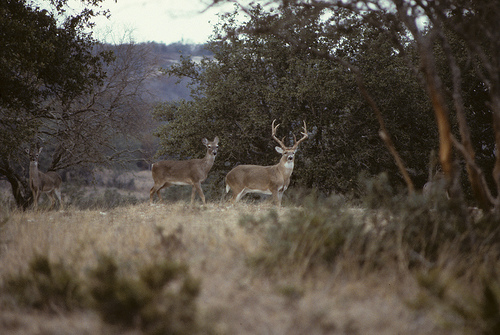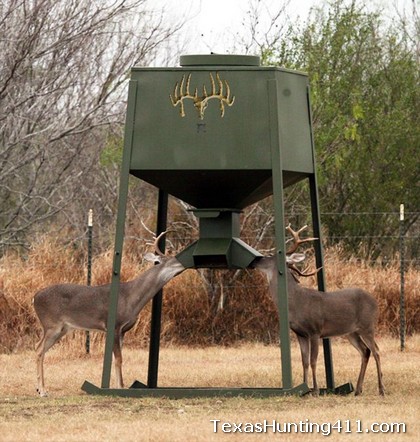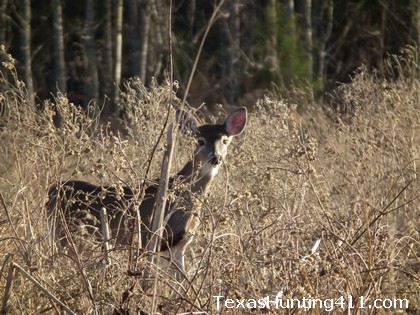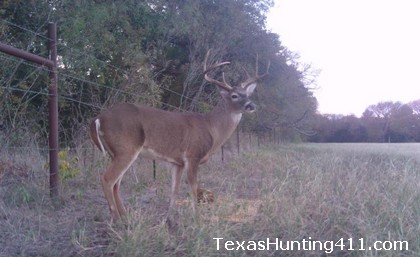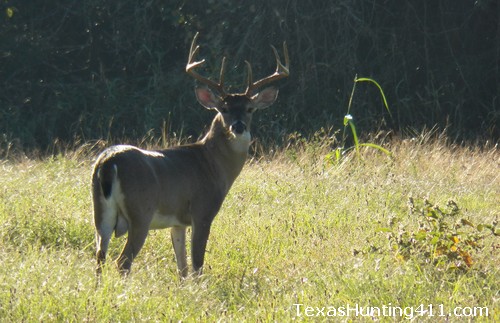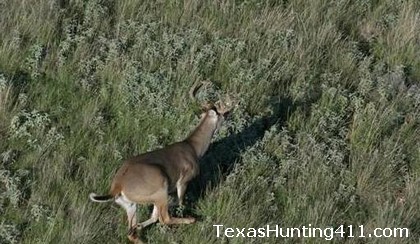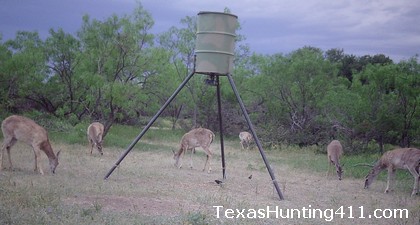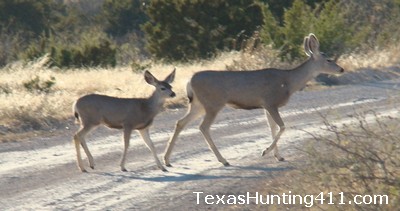Question: “Interested in better deer hunting on our ranch in Central Texas and performing spotlight or trail camera surveys . When a deer survey is carried out, what number of deer per acre is considered high and what is low? Do you simply count the number of deer per on the property and divide it into the size of the property? How is density estimated using a trail camera? I imagine that the “right” number of deer for a property will depend on the part of the state, but what is a rough estimate of a good deer density?”
Texas Hunting: When it comes to deer surveys I recommend talking to your county Texas Parks and Wildlife Department (TPWD) biologist. He or she will take a look at your property and give you a tight range of the number of animals that it can support. They will even help you estimate the number of animals on your property or give you a guess based on current habitat condition. As you have already guessed, habitat is the deciding factor when it comes to deer density. It can vary greatly inside a county and from property to property. I know that on a particular property in South Texas it is recommended that there be one deer to every 18 acres. Another ranch in the post oak region of Texas may support one deer for every 9 acres. A lot depends not only on the habitat, but also the goals of the property owner. Maximum is not always best.
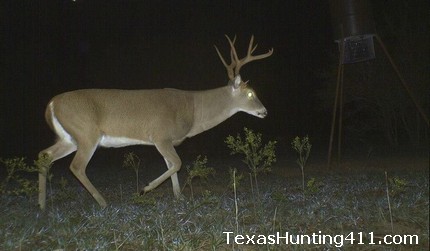
Trail Cameras and Spotlight Surveys
Spotlight surveys are used to determine deer density, but trail cameras when used correctly can be used to estimate numbers too by estimating a single component of the herd, bucks, but you will also need to keep track of does and fawns. You can use the info from your game camera to get an estimate on your buck to doe and fawn to doe ratios. The results will depend on a lot of factors though. I would take every photo and count every deer in each photo. If the same doe is in 5 pictures in a row then count her every time. You have to do it this way since you won’t always be able to tell one doe from another. Same for a fawn or a buck (sometimes they will be facing various directions). After you have a total of doe, fawns and bucks you can calculate your ratios. The more data you have, however, the better your estimate will be. I took a survey form to the blind with me every time I deer hunted and kept count of the different deer I was able to see that sit in the blind. I think the stand count data showed a better buck to doe ratio than the trail camera survey, but they were both very close.
Spotlight surveys, trail camera surveys, incidental counts and stand counts provide great deer population data on a ranch when used in combination. Spotlight counts are good at estimating deer density and much less expensive than helicopter surveys (which do not work in many areas anyway). Every technique will give you a numbers of bucks, does, and fawns so pool them all together to get the best data. Over the course of several years you will get a great idea of what is happening on the property, then the biggest factor affecting the herd becomes reproduction and recruitment.
Trail Camera Surveys for Deer: Do It Right!
Do not trust trail camera surveys for whitetail deer when cameras are ONLY placed on feeders! Game cameras can be place at feeders, but they should also be set at bait piles and random locations. Cameras placed at feeders alone will not accurately estimate a deer herd. If I were conducting a camera survey I would semi-grid the ranch and use bait piles to count the deer with roughly 100 acres per camera. Of course, I would also count all deer observed with my own eyes at feeders, roadways, troughs, food plots, and everywhere else as I was on the property to supporting camera data.
The one great thing about trail cameras placed at feeders is that they tend to capture almost all of the buck herd within a relatively short period, usually within a couple of weeks. Although does and fawns can rarely be identified individually, almost all bucks can be distinguished based on antler characteristics. Trail cameras placed at feeders will survey bucks the best since feeders attract more bucks than does. That’s because bucks tend to dominate feeders. They best time is when food is limited, typically late summer.
Use the total number of different bucks caught on camera using feeders as THE number of bucks on the property, then forget about those photos. All you needed them for was to get the number of unique bucks on the property. Next, use all the other survey data (stand observations, random trail camera placement, etc.)to calculate the buck to doe ratio and doe to fawn ratio. For example, if you count 20 different bucks with trail cameras placed at feeders, then assume you 20 bucks. If eyeball observations and randomly placed trail cameras give you a buck to doe ratio of 1:3 and a doe to fawn ratio 2:1 then you have 20 bucks, 60 does and 30 fawns. It’s all there to calculate based on the number of bucks and the herd composition data.
Using trail cameras to survey deer on high fenced properties less than 600 acres is highly accurate. It gets more difficult as property size increase. It also gets more complicated on low fenced properties because deer will be coming on and going off the property at all times. It may take spotlight surveys to estimate deer density as well, or at least learning how to read the habitat to assess whether the herd is healthy (plenty of food) or needs to be reduced (plant over-use). You can also used the body weights of harvested deer to substantiate what you are seeing on camera and on the ground. Trail camera surveys can work for whitetail deer if you do it right from the start.
